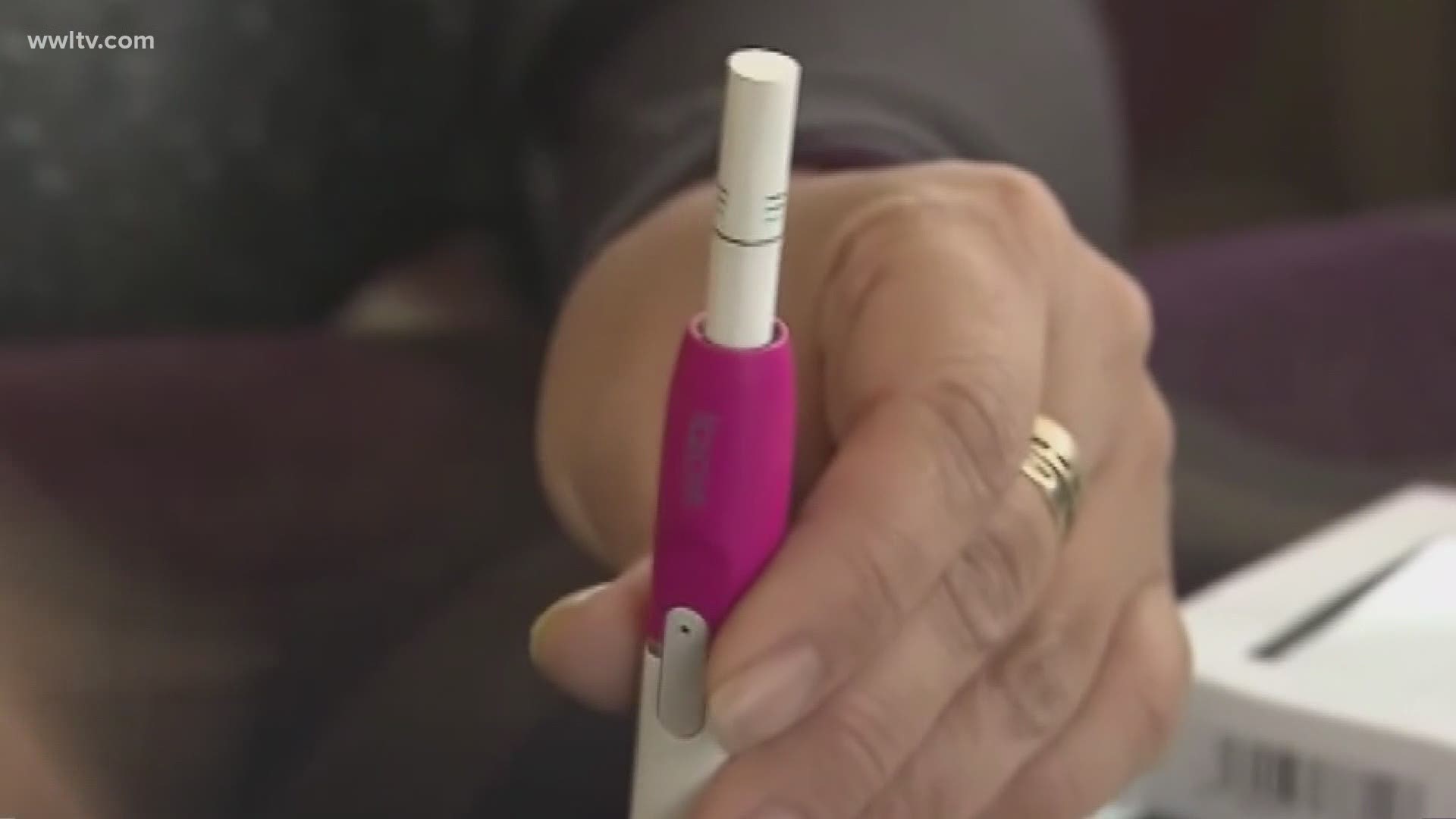NEW ORLEANS — The studies are clear: Smokers have a higher risk of severe COVID-19 symptoms and teens who vape are at a much higher risk of being infected with the coronavirus.
And just this past spring, the FDA approved a new way to inhale nicotine. And while its effects on COVID are still unknown, two local doctors have general health concerns.
When cigarettes first came out, and then much later vaping, both were thought to be safe. Now each is linked to severe health problems and death. So two researchers at LSU Heath are getting out ahead of the latest tobacco trend. It's called HNBs.
“The problem with these products is they're very attractive to youth and young adults,” noted Dr. Jason Gardner, a Professor of Physiology at LSU Health Sciences Center.
HNBs are "heat not burn” devices and are unlike any other that deliver nicotine. The largest U.S. tobacco company, Philip Morris, makes the devices known as "IQOS." Its website says toxicants come from combustion, but by heating nicotine you get an aerosol and a 90 percent reduction of inhaled toxicants than when it's burned in a cigarette.
So Dr. Gardner, and medical and doctoral student Nicholas Fried, combed through the world studies on HNBs in people, animals and cells in the lab. They found something different.
“If you look at the compounds that come out of the heat not burn products, they're really the same compounds that come out of a cigarette, although they tend to come out at a lower level,” Dr. Gardner said.
But the problem, they say, is the health damage from those compounds is almost the same as in cigarettes and can lead to problems with the heart, blood vessels and strokes. Studies from overseas, where HNBs have been out for five years, don't show that they are helping people quit cigarettes as marketed.
“There are concerning trends here where these might be compliments or gateways into cigarette smoking, rather than a replacement for cigarette smoking,” said Nicholas Fried, a second year medical student at LSU Medical School, and co-author of the review.
And they said chemicals and tiny particles are getting into your blood stream while using HNBs.
“The take home message is that while they may be slightly more healthy than smoking cigarettes, no tobacco products are safe,” Fried said.
And while parents may not have heard of the HNB device, surveys in the U.S., Canada and England found that nearly 40 percent of young people already have an interest in trying it.
The review paper is in pre-print and scheduled to be published in the American Journal of Physiology-Heart and Circulatory Physiology. You can read it here.

